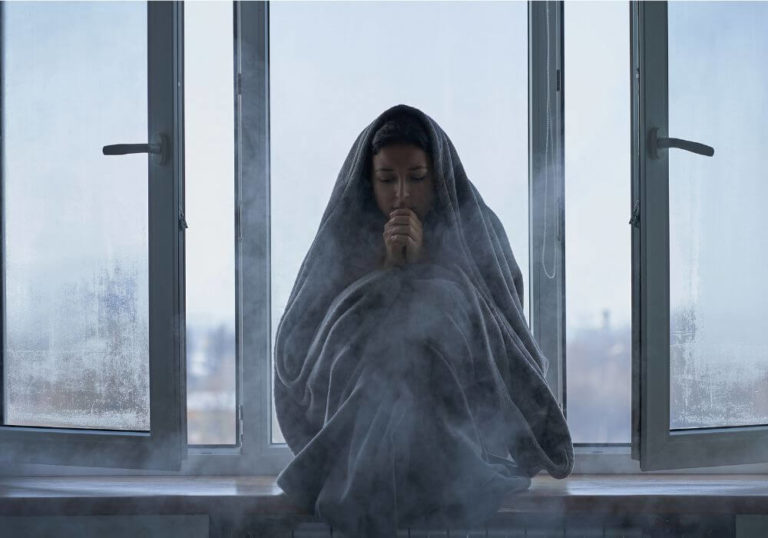Does the temperature in one of your rooms seem to fluctuate constantly? You may wonder why are some rooms colder than others.
Hot and cold spots in the house are a typical problem that can be explained by several factors, from an over- or undersized unit to something as basic as blocked or closed air vents. These issues often lead to uneven home temperature throughout your living spaces. We are going to address some potential explanations for why are some rooms colder than others.
Reasons Why Are Some Rooms Colder Than Others
Why are these fluctuations in temperature occurring? Find out why are some rooms colder than others and how to address the issue.
Air Leaks
The accumulation of leaks around windows, doors, pipes, and electrical outlets can be substantial. Examine your house carefully and fix any air leaks with caulk, spray foam, or other appropriate insulation. Your comfort level and energy costs can be significantly impacted by even minor leakage.
Air Vents That Are Blocked Or Unopened
Whether closed during the off-season or by someone else in your house and then forgotten, blocked or unopened vents are very common. It’s easy and cost-free to quickly inspect the air vents and open them if necessary.
Damaged Or Blocked Ducts
Ductwork can get blocked, broken, and disconnected due to animal and insect infestations, as well as damage caused by family members during the yearly gathering in the attic for holiday décor. Check every piece of ducting in your attic. Any noticeably dark and unclean insulation next to the ducting may indicate a long-term leak.
Inadequate Ductwork Installation
Thinking, “Why are some rooms colder than others despite my system being new?” Air distribution has little to do with new systems. Ductwork is necessary for the distribution of air. Unbalances may result from poorly installed ducting or from outdated ductwork that wasn’t updated with your system. To solve these problems, a competent contractor will build supply and return vents with careful planning, gradually reduce the size of the ducts for a balanced system, and adjust dampers—those small metal handles that protrude from the side of ducts—to further balance the temperature and airflow.
Inadequate Insulation
Both new and old homes frequently have inadequate insulation, particularly those with vaulted ceilings. Uncertain about your home’s level or what is advised in your neighborhood? A free home energy audit is provided by the majority of nearby electricity companies.
Not Enough Return Air
Uneven temperatures can result from strangely placed or remote air returns, particularly in areas with closed doors. These circumstances might be resolved by more air returns.
Unbalanced Ductwork
Your ductwork may be out of balance if one room in your house heats or cools significantly more quickly than the others. Your system can be balanced by adjusting dampers, which will improve airflow management. But it’s not always easy to balance a system, and some floor plans are considerably harder to balance than others, especially two-story and long ranch-style floor plans.
Unclean Filter
At least every two to three months, make sure your air filters are cleaned and replaced. Cold rooms, uneven air flow, and decreased efficiency are frequently caused by dirty filters. Clean filters help maintain HVAC system efficiency and support improving indoor comfort.
Unsuitable System Size
Your furnace system might not be the right size for your house if one room is colder (or warmer) than the others. This typically occurs when an expansion is constructed without the HVAC system being modified to accommodate the additional square footage.
HVAC zoning, which divides your house into zones with distinct thermostats for each zone, may be beneficial for your house. Because each thermostat is independently controlled, you have complete control over your house and can configure various zones to have varying temperatures.
Tips: Why Are Some Rooms Colder Than Others
Check The Thermostat
It can be challenging to get your rooms at the right temperature if the thermostat interprets the temperature wrongly. Put a thermometer on your wall near the thermostat reader and keep it there for fifteen minutes to check the accuracy of the thermostat. To stop hot or cold wall temperatures from being transferred, lay a paper towel behind the thermometer while doing this. This is done in order to ascertain the room temperature.
After fifteen minutes, compare the two readings. You can have a malfunctioning thermostat if the thermometer and thermostat reader are more than one degree apart.
Check The Walls’ Temperature
The issue may be more related to deteriorated insulation than your heater if one wall of your house is significantly colder than the others in the winter. It would be necessary to remove the internal plasterboard to buy new insulation and have the wall cavities re-stuffed.
Inspect The Ductwork
There may be ductwork leaks if certain rooms in your house feel under heated. The issue might only affect one or two rooms in your house, or it might be widespread. A gap-sealant solution, like an aerosol polymer spray, is the simplest and least expensive approach to repair damaged ducting. The polymer lines the inside walls of the ducts and plugs up cracks in the ducts when it is placed inside.
Inspect The Heating Vents
Inspect all the heating vents in your house. If a vent is covered by furniture, move the furniture out of the way and reorganize the space if needed to make a place for the alteration.
The issue could arise if the inner vent is lined with dirt. You have an infestation problem and should contact your exterminator right away if you notice rat droppings or a rodent carcass. To check the vents more thoroughly, bring a flashlight. By reaching inside and using your smartphone to take pictures, you may also have a better understanding of the condition of your vents.
Maintain Clean Return Air Vents
Dust and debris in the air vents may be preventing temperature from passing through. Unscrew the duct covers from your walls and turn off your air conditioner. Each duct’s grate should be completely cleaned. Use cleaning spray or soapy water as required. Use a vacuum hose to clear the air ducts of dust and to vacuum over any cracks.



